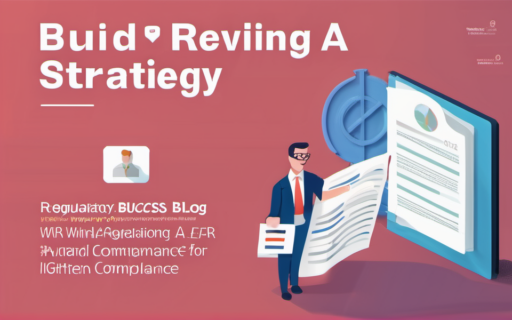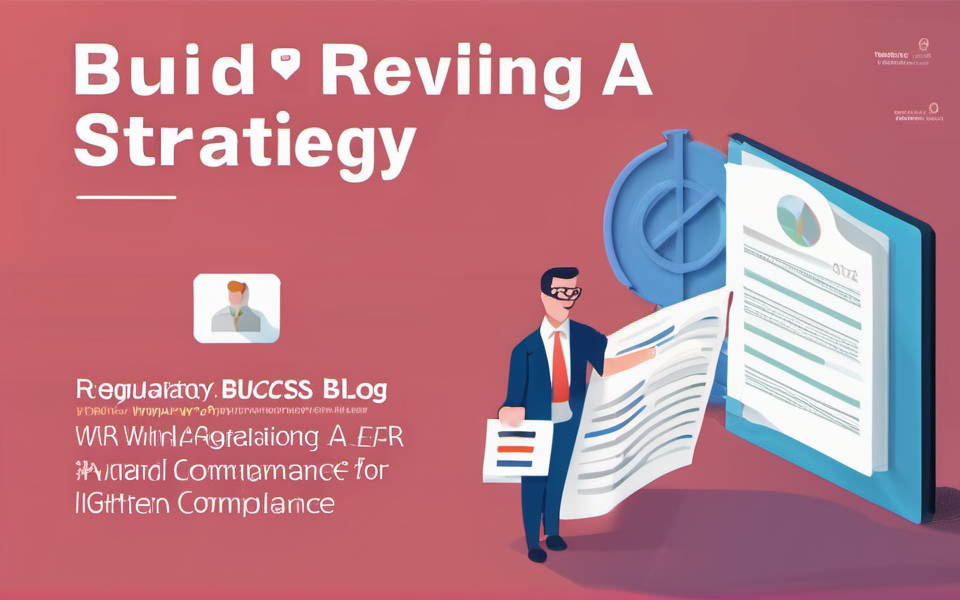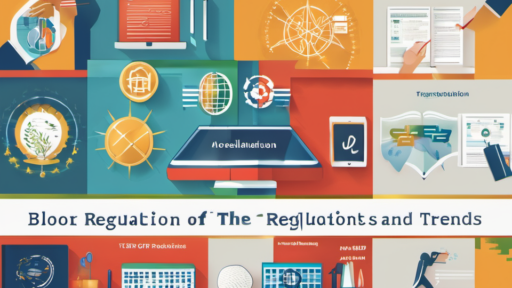Are You Sleepwalking Through a Regulatory Minefield? Wake Up! Your Business Needs a Rock-Solid Compliance Strategy!
The business world is a jungle, full of fierce competition, unpredictable shifts, and of course, ever-evolving regulations. If you think you can ignore these regulatory beasts, you’re playing a dangerous game. One misstep and you could be facing massive fines, crippling lawsuits, and even criminal charges.
The good news? Building a solid regulatory compliance strategy can save your company from this fate. Think of it like building a fortress around your business – a shield against the potential damage caused by regulatory non-compliance.
Why Do You Need a Regulatory Compliance Strategy?
The Need for a Compliance Strategy: It’s not just about avoiding punishment; it’s about building trust.
Your customers and partners need to be confident that your company operates ethically and legally. A strong regulatory compliance strategy demonstrates this commitment. This fosters trust and builds a foundation for sustainable growth.
Imagine a world where your company:
- Meets every regulatory requirement with confidence, knowing you’re operating within the law.
- Aligns internal policies with external regulations, creating a seamless and efficient process.
- Minimizes risk, anticipating and mitigating potential legal and reputational damage.
- Establishes a proactive compliance culture where employees are aware and empowered.
This is the reality a robust compliance strategy delivers. It’s more than just checking boxes – it’s about creating a culture of ethical and responsible business practices.
Steps to Building Your Regulatory Compliance Fortress:
Building a regulatory compliance strategy requires more than just checking a few boxes; it’s about laying a solid foundation and building a lasting system. Think of these steps as your roadmap to compliance success.
1. Assess the Landscape:
Start by understanding your current situation: What are your company’s regulatory risks? Which laws and regulations are most relevant to your business? This step involves identifying the specific legal frameworks, such as data privacy laws like GDPR, HIPAA, and CCPA, or industry-specific rules, such as financial regulations or environmental protection standards.
Conduct a thorough assessment of your business:
- Identify all applicable laws and regulations: This involves researching both federal and state laws, along with industry-specific rules and regulations.
- Map your business processes to the applicable regulations: This step helps you pinpoint potential compliance gaps.
- Identify potential risks: Are there areas where your business practices are particularly vulnerable to non-compliance?
- Evaluate your current compliance program: Does your company already have a compliance program in place? If so, is it adequate?
Use this information to establish a clear picture of your current regulatory landscape. It’s a crucial first step in building a strategic approach to compliance.
2. Establish a Robust Compliance Framework:
Think of this framework as the foundation for your regulatory fortress. It defines your company’s approach to compliance and sets clear expectations.
Elements of a robust compliance framework:
- Clear Compliance Policies and Procedures: Document your policies and procedures so everyone knows how to comply with the applicable regulations. These should be tailored to the specific needs of your company and cover all aspects of compliance, such as data protection , financial reporting, and anti-bribery practices.
- Compliance Roles and Responsibilities: Assign roles and responsibilities clearly so there’s no ambiguity regarding who is responsible for what.
- Internal Control Measures: Implement strong internal controls to mitigate the risks of non-compliance, for example, establishing robust risk management processes, setting clear audit procedures, and establishing strong segregation of duties.
- Continuous Monitoring and Reporting: Regularly monitor compliance efforts to ensure effectiveness. Track and report on your compliance activities. This might involve conducting regular audits or reviews, updating policies and procedures as needed, and identifying any areas needing improvement.
Developing this comprehensive compliance framework lays the groundwork for an efficient and effective regulatory compliance program. It’s the key to building a sustainable foundation for your business.
3. Educate and Empower Your Employees:
One of the most critical steps in achieving successful compliance is to create a culture of awareness. Your employees are your greatest asset and must understand their responsibilities in supporting compliance.
How to educate and empower your workforce:
- Offer regular training sessions: Cover topics like data protection, anti-bribery and corruption laws, anti-money laundering (AML) regulations, and financial reporting compliance.
- Make compliance resources readily accessible: Provide clear and accessible materials to answer common questions and help employees navigate compliance issues.
- Establish an open communication culture: Create an environment where employees feel comfortable asking questions and reporting potential compliance issues.
- Reward and recognize compliance behavior: This reinforces positive compliance practices and helps foster a culture of ethical behavior within your organization.
Remember, effective compliance begins with every member of your organization. By equipping them with the knowledge and tools to understand their roles in the process, you foster a stronger, more resilient company culture.
4. Implement a Culture of Compliance:
Don’t stop at education; weave compliance into the fabric of your business culture. It’s not just a policy, it’s a way of life!
How to integrate compliance into your culture:
- Embed compliance principles in performance goals and rewards: Recognize and reward employees who demonstrate exemplary compliance behaviors.
- Encourage whistleblower policies: Create a system where employees feel safe reporting concerns, without fear of retribution.
- Promote leadership buy-in: Top management must show strong support for compliance initiatives.
- Incorporate compliance into daily operations: Integrate compliance checks into your day-to-day activities and make them a natural part of your decision-making process.
A true culture of compliance takes time to develop, but the benefits are immense. It promotes ethical decision-making and strengthens your business by mitigating risks and building trust.
5. Continuously Monitor, Adapt, and Improve:
The regulatory world is always evolving. Stay agile and adapt your strategy to remain in compliance with changing legal frameworks.
Steps to continuous improvement:
- Conduct regular risk assessments: Monitor your business operations and assess emerging regulatory trends.
- Regularly update your policies and procedures: Review and update policies and procedures to reflect changes in the legal landscape.
- Seek legal advice as needed: Consult with legal experts when you need clarity on the changing landscape and new interpretations of regulations.
- Evaluate the effectiveness of your compliance program: Conduct regular audits or reviews of your compliance program to identify potential gaps and areas for improvement.
- Stay Informed and Engaged: Participate in industry groups, attend conferences, and leverage online resources to stay updated on relevant legislation and new developments in regulatory compliance.
Never become complacent. Constant vigilance and ongoing improvement are essential for staying ahead of regulatory changes and ensuring ongoing compliance.
Key Takeaways for Building a Successful Regulatory Compliance Strategy:
- Recognize the Importance of Compliance: It’s not just a legal obligation; it’s crucial for building trust, fostering sustainable growth, and safeguarding your business from harm.
- Start by Understanding Your Risks: Conduct a thorough assessment to identify the regulations most relevant to your business.
- Establish a Clear Compliance Framework: This should be the foundation of your program, setting clear policies, assigning roles and responsibilities, and establishing internal control measures.
- Educate and Empower Your Workforce: Create a culture of compliance by investing in employee training and building a transparent and supportive communication system.
- Integrate Compliance into Your Business Culture: Make compliance a core value by promoting ethical behavior and ensuring leadership support.
- Stay Agile and Adaptable: The regulatory landscape is constantly evolving. Remain informed, continuously monitor your program, and make adjustments to keep pace with new laws and changing interpretations.
By embracing these principles and creating a solid compliance strategy, you’re not just navigating a regulatory maze – you’re building a fortress of strength and resilience for your company. The future is bright for businesses that take compliance seriously!






